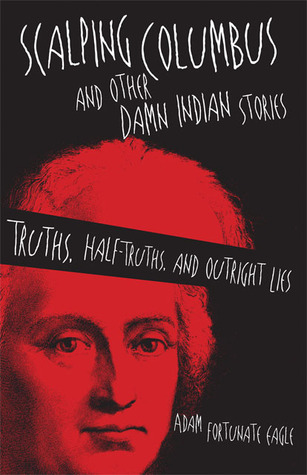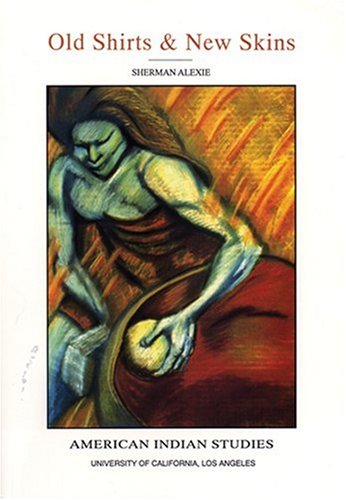Native American Heritage Month – a guest post by B. Three Eagles
For this Native American Heritage Month, I’m sharing a collection of books that have been impactful for me personally. Everyone approaches history differently; many people want only the facts, while others prefer narratives that give just a general idea of the events, but a more personal view of the experience, and some still want less of the truth and more of the feelings of the author. I have tried to include at least one of each type, so that every reader can find something to enjoy.
It would be worth noting that not all of these books are about Native American history, though. Some are more modern, personal accounts of an individual’s life. I tend to enjoy autobiographies the most—after all, who better to tell a story than the person that lived it? And the few I highlight here are each iconic in their own right.
I also want to point out that the American version of this history is very different from the Native American version. That is, in the end, why Glass House asked me to write this blog—and why we’ve been featuring Native American characters this month. If this is your first time delving into the topic, you may be surprised (and not pleasantly) to hear the stories from the other side. Remember as you go in, though, two things—both sayings I’m sure you will have heard. First, there are two sides to every story, and second, history is always written by the victor.
And even those who’ve never delved into Native American history know who the victor was. Which means, of course, that if you get into these books, you’ll be reading an entirely different version of the story! Which is … well, the point, isn’t it?
Another warning, though: The stories from this period of our history are most often sad. But there is also a strength there, an indomitable will to survive, and that pertains not only to life itself, but culture and tradition, as well. This is the part that I find the most worth in sharing, and I thank all the authors that have written their stories for the world. To show us their pain may be hard, but to share their triumph over it is inspiring.
~ B3E
1. Bury My Heart at Wounded Knee by Dee Brown
Bury My Heart at Wounded Knee displays, once and for all, how the West was truly won. Dee Brown presents the intentional, systematic destruction of the American Indian during the second half of the nineteenth century, painting a heart wrenching and blood-soaked mural that is difficult to ignore.
The information cited is fully documented. Using council records, autobiographies, and firsthand descriptions, Brown allows the tribes to tell of the events that finally left them scattered, broken, and defeated. Their words create a disturbing narrative, told with such emotion and forceful clarity that I was left with only one thought as I finished reading: the blood, sweat, and tears that built this country poured first from the Native American.
2. My Life Is My Sun Dance (Prison Writings) by Leonard Peltier
“Those who put me here and keep me here knowing of my innocence can take grim satisfaction in their sure reward, which is being who and what they are. That’s as terrible a reward as any I could imagine. I know who and what I am. I am an Indian–an Indian who dared to stand up to defend his people. I am an innocent man who never murdered anyone nor ever wanted to. And, yes, I am a Sun Dancer. That, too, is my identity. If I am to suffer as a symbol of my people, then I suffer proudly. I will never yield.”
~ Leonard Peltier
If one man’s life could represent the entire scope of what his tribe endured as the West was conquered, Peltier would probably be that man. I admit to my own bias, here—I do believe him innocent, though he was sentenced to two life sentences for crimes that FBI agents and other government entities admitted he could not have committed. He is a political prisoner, but also a humanitarian, well known for his non-violent style of defending Indian rights; he is even sometimes referred to as the Nelson Mandela of the America Indian people.
This is his memoir—his manifesto—and a disturbing chronicle of his life behind the bars of Leavenworth Prison. Sun Dance is an extremely sacred ceremony in which pain and personal sacrifice lead one to transcend reality; Peltier compares his suffering and the insights he has gained to this ceremony.
3. The Earth Shall Weep: A History of Native America by James Wilson
The Earth Shall Weep is a well-written, but utterly shocking revelation of American history, containing all the information that every American should have, but are unlikely to ever be taught. And you don’t have to be naïve about the relationship between the settlers and Natives for this book to shock you; I was raised with ‘the other side of the story’ and still found it hard to read a few parts.
Quite fittingly, James Wilson quotes the historian Francis Jennings, who observed that “the American land was more like a widow than a virgin. Europeans did not find a wilderness here; rather, however involuntarily, they made one.” Combining the age-old historical sources with new insights from ethnography, archaeology, Tribal oral tradition, and a lifetime of his own original research, James Wilson delivers proof of the statement in this historical narrative, charting the collision course between Euro-Americans and the Natives. From the earliest interactions and clashes that followed, to the rising political force of Native American activists today, The Earth Shall Weep chronicles the destruction, but also offers the author’s own guarded optimism, highlighting how many tribes have managed to preserve and even rebuild their cultural identities.
4. The Jailing of Cecelia Capture by Janet Campbell Hale
The Jailing of Cecelia Capture is a fictitious story about a woman that is struggling to find herself in the wake of a lifetime of loss, abuse, and sadness. The main character, Cecelia, is trying desperately to balance her troubled past with her hope for the future. Being mixed-race, trying to find her place in society, attempting to discover who she is and what that means—Cecilia is a complex and sometimes melancholy character struggling against a system seemingly built to make her fail, though she consistently refuses to do so. From a childhood spent with an alcoholic full-blood father and a crazy half-breed mother, to the string of ill-fated love attempts of her adulthood, Cecelia seems hopelessly destined to be mistreated and alone. Searching for some sort of meaning—an identity that doesn’t involve endless pain—Cecelia goes back to the Idaho reservation where she was raised. Reclaiming her Native American identity brings a new sort of purpose to her life, bolstering her and helping her to move on.
5. Scalping Columbus by Adam Fortunate Eagle
Scalping Columbus is an autobiography … sort of. The book is comprised of short stories from the author’s own life, but on the cover, in the foreword, and a few times more throughout, the author reminds you that he reserves the right to embellish, exaggerate, and outright lie wherever the story calls for it. For the stories aren’t just events as they happened, but how he saw them or perhaps wanted them to happen. How many times have we all seen or done something, and then later played the events back differently in our mind, changing the outcome or tweaking the details to satisfy our own vivid imaginings of what could have been?
Fortunate Eagle presents himself as a contrary warrior—a trickster—battling for Indian rights through humorous and satirical stories that certainly make statements. Sometimes he may teach a bit of his culture, other times he points out discrepancies with the status quo or details what he believes to be outright injustices committed against himself and/or his people, but he always does so in a way that is thoroughly entertaining, making the reader laugh so much that they almost don’t realize they’ve just learned something.
6. Fools Crow by James Welch
As a work of historical fiction, Fools Crow is a powerful and dramatic exploration of the cultural clash between the Native Americans (particularly the Blackfoot) and the American settlers. Fools Crow is a young Blackfoot warrior during the late 1800s, during the time when tensions were probably at their highest between the new settlers and the indigenous tribes. The “native” language style (i.e., days counted in ‘sleeps,’ months in ‘moons,’ and so on) delves us immediately into the midst of the Blackfoot encampment, breathing believable life into the characters and setting the tone for the story.
Fools Crow is the true center of the story—his life, interactions, etc.—with the outside conflicts being almost secondary to the rich portrait of his tribal life. Written by a modern tribemember, Fools Crow does not attempt to romanticize Blackfeet culture, portraying them as ‘noble savages.’ Instead, Welch offers the reader a look at a different world—the values and struggles, culture and beliefs—with many details, providing a rare and vivid insight into a way of life that is all but lost.
7. Old Shirts & New Skins by Sherman Alexie
This is, perhaps, an odd one for this type of post. A collection of poems does not usually merit mention on a ‘book list,’ but I assure you, this one does. By now, most of you have probably heard the name Sherman Alexie. As an author of several popular novel-cast short story collections, he has gained notoriety in these past few years. Yet most of his fans have never explored any of his earlier work. Presumably, this is because of its poetic structuring. I find this sad because, in poetry, there is a certain lack of rules—a freedom to say what you mean however you wish to say it—and a surplus of emotion and power tends to come through, unrestrained, because of this.
On this note, I highly recommend Old Shirts & New Skins. The collection is a brilliant look into the mind and heart of one of Native America’s best modern authors. The poems link present struggles with historical slaughters—the Indian wars. But it’s not the Indian wars as you know them; it’s the untold story of the other side—the Native people defending their way of life. Alexie correlates the two through poem, then pairs his own work with beautiful illustrations by Elizabeth Woody, wrapping the whole into a masterpiece of unfortunate history and creating a gritty, raw, and sometimes angry present, and promising a focus and determination to come (which, as we all know, he has gone on to deliver).
B. Three Eagles is a long time doodler, freelance designer and artist. She comes from a mixed background of Native American and Gaelic cultures, both of which are celebrated in her daily life. Since childhood, B. has kept journals of random daydreams and short stories, but didn’t officially delve into the world of writing (you know, for other people) until the summer of 2010.
She currently lives in the foothills of the Ozarks mountain range with her husband and daughter.
Her debut novella, Book of Seidr is set to be released in 2015 as an introductory prelude to the first novel of the series, Lady Valkyrie n Element Alive series.












Leave a Reply